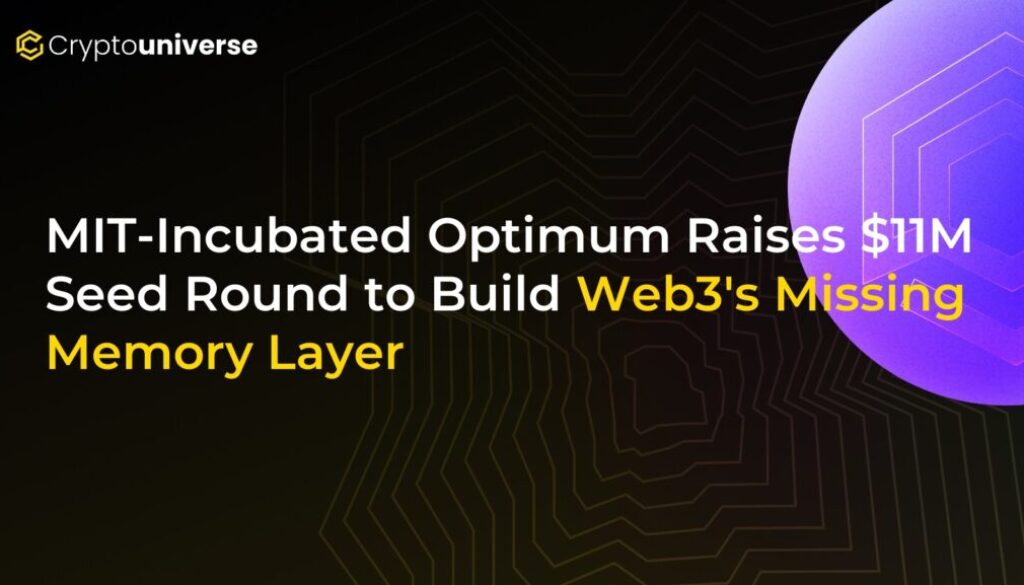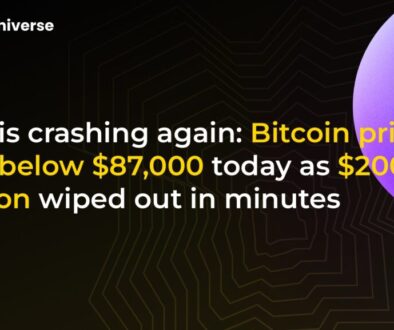MIT-Incubated Optimum Raises $11M Seed Round to Build Web3’s Missing Memory Layer

Optimum Secures $11M to Revolutionize Blockchain Data Handling
In a significant move bridging academia and the commercial crypto world, Optimum, a project incubated at MIT, has successfully closed an $11 million seed funding round. The round, led by prominent venture capital firm 1kx, aims to fuel the development of what Optimum calls “Web3’s missing memory layer.”
Participation in the round saw contributions from a diverse group of investors, including Robot Ventures, Finality Capital, Spartan, CMT Digital, SNZ, Triton Capital, Big Brain, CMS, Longhash, NGC, Animoca Brands, GSR, Caladan, Reforge, and others. This strong backing underscores the industry’s recognition of the critical need Optimum addresses.
The Problem: Why Web3 Needs a Memory Upgrade
Imagine Web3 as a giant, decentralized “world computer.” According to Optimum’s co-founder, MIT Professor Muriel Médard, while significant progress has been made on the processing (compute) and operating system aspects, a crucial component is underdeveloped: memory.
Professor Médard draws an analogy to building a traditional computer: “Anybody who’s put together a computer knows that you also need a bus, which is the data propagation, and you need a memory, which we call the random access memory (RAM), as opposed to more static memory like a disk or the cloud.”
Current blockchain infrastructures often suffer from inefficiencies due to this lack of a dedicated, high-performance memory layer. Key issues include:
- Outdated Gossip Networks: These networks redundantly propagate data across nodes, consuming unnecessary bandwidth.
- Congested Mempools: Transaction pools become bottlenecks, leading to unpredictable delays and higher fees.
- Bloated Nodes: Storing ever-increasing amounts of historical data makes nodes costly to run and complex to query efficiently.
- Slow Data Access: Retrieving specific data can be slow and cumbersome.
The Solution: Optimum’s Decentralized Memory Layer with RLNC
Optimum tackles these challenges head-on by building a decentralized, performance-enhancing memory infrastructure applicable to any blockchain. The goal is to make data storage, access, and propagation faster, cheaper, and truly decentralized.
At the heart of Optimum’s technology is Random Linear Network Coding (RLNC), a sophisticated method for distributed systems developed by Professor Médard herself. RLNC encodes data into packets for transmission across networks in a highly efficient and fault-tolerant manner. This technology, refined over two decades and recognized with prestigious awards, forms the foundation for Optimum’s high-performance memory solution.
By implementing this memory layer, Optimum aims to:
- Optimize Data Propagation: Reduce redundancy and latency in data sharing across the network.
- Streamline Storage: Decrease the burden on individual nodes.
- Accelerate Access: Enable near real-time data retrieval.
Funding Fuels Growth and Integration
The $11 million raised will be instrumental in accelerating Optimum’s development and integration efforts across major blockchain ecosystems. Wei Dai, Research Partner at lead investor 1kx, commented, “It was obvious from our first interaction with the team that the technology around RLNC has far-reaching potential…to solve critical bottlenecks in decentralized networks and supercharge all blockchains.”
Optimum’s vision, backed by a team with roots in MIT, Harvard, and Meta, is to provide the foundational infrastructure needed for blockchains to truly scale and serve as the backbone of a decentralized internet. This enhancement promises benefits for various stakeholders:
- L1s & L2s: Enhanced scalability and performance.
- Validators & Node Operators: Lower operational costs and potentially higher yields (APY).
- Developers: Ability to build faster, more responsive decentralized applications (dApps).
- End Users: A cheaper, smoother, and faster Web3 experience.
What’s Next for Optimum?
Optimum is currently live on a private testnet (OptimumP2P). The team is actively inviting Layer 1s, Layer 2s, validators, and node operators to experience the benefits of its decentralized memory layer firsthand. This phase is crucial for gathering feedback and refining the system for broader adoption.
By addressing the fundamental challenges of data handling in decentralized networks, Optimum is positioning itself as a critical infrastructure provider, potentially unlocking the next wave of innovation and efficiency in the blockchain space.


